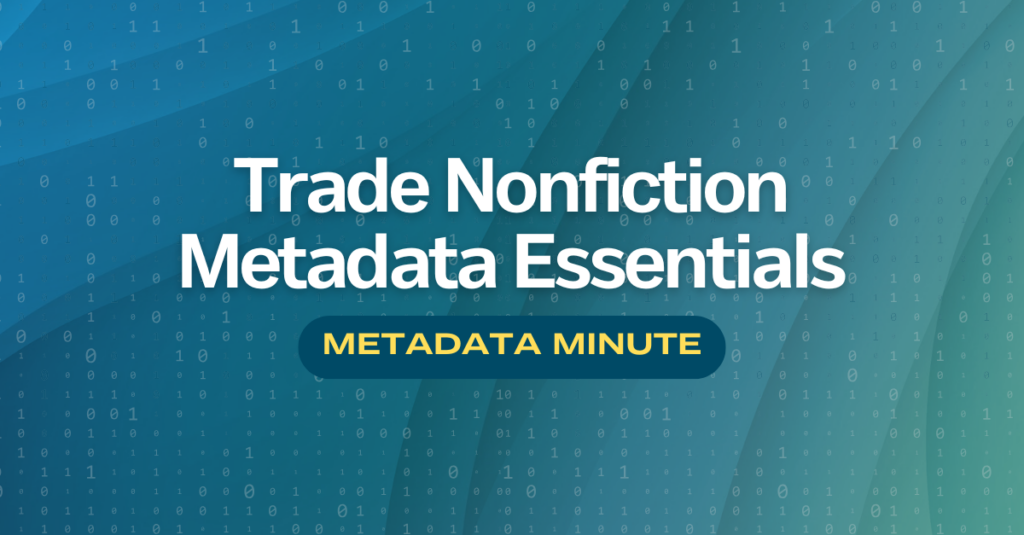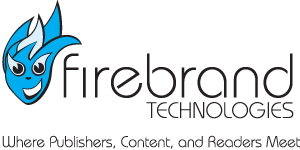
Metadata Minute (Issue #22): Christmas in July—Planning Ahead for Holiday Metadata
Trade nonfiction titles are one of the most competitive genres in publishing. In May 2024, sales in this category were up 9% year-over-year, with continued growth into early 2025. Every new release has bestseller potential, but standing out in such a crowded and lucrative field requires strong, strategic data.
Here are some key metadata strategies to help your nonfiction titles perform better online.
Basic Metadata
Strong metadata starts with the basics. Historically, multiple research projects over the year have shown that trade nonfiction titles see up to 97% sales growth when all the foundational elements are included. Every nonfiction title should contain as many of these 11 metadata elements as possible:
- ISBN
- Title
- Product form
- Main BISAC subject category
- Imprint name
- Publication date
- Cover Image
- At least one supplier name
- Availability status
- Retail price
- Territorial rights
Studies have also found that titles with enhanced descriptive elements—short and long descriptions, reviews, author bios, and table of contents—performed 71% better than those without.
BISAC Subjects
Nonfiction spans across countless titles, and without accurate subject coding, your title’s discoverability takes a massive hit. Avoid “General” codes whenever possible. BISG recommends assigning three BISAC codes per title—giving you the ability to cross-categorize and highlight different facets of your books’ content and audience. Essentially, don’t limit yourself to one BISAC subject heading.
For example, a title on sustainable business practices could include:
- BUSINESS & ECONOMICS / Development / Sustainable Development
- NATURE / Environmental Conservation & Protection
- SELF-HELP / Personal Growth / Success
Because BISAC codes are updated annually (usually in December), consider scheduling an annual subject code audit to ensure your codes remain relevant and competitive.
Book Descriptions: Length & Tone Matter
Book descriptions are arguably the most important piece of visible trade nonfiction metadata. As always, but especially for this genre, less is not more. A strong & lengthy description should serve as a persuasive sales pitch, including review quotes, awards, accolades, and author credentials, as well as clear reasons on why the subject matters, what readers will gain, and why this book delivers the answers they need.
Just as important as length is tone. Don’t delegate this task to entry-level staff or AI—editors should be directly involved, because the tone must align with the book itself. Otherwise, you risk confusing readers or underselling your products.
- Self-help: encouraging, clear, outcome driven
- Memoir: personal, matching author’s personality (humor if they’re a comedian, etc.)
- Political: urgent, persuasive, authoritative
TIP:Make your description skimmable. Use bullet points, quotes, bold / italicized emphasis, and short paragraphs to improve readability and conversion.
Author Credibility
For nonfiction, the author is the productas much as the book. Metadata should highlight why the author is uniquely qualified to write on the subject. Include this information in both the author bio and the book description:
- Professional headshots
- Academic degrees or certifications (PhD, MD, CPA, etc.)
- Relevant education, career history, and affiliations
- Media appearances, interviews, or speaking engagements
- Details about the author’s platform (blog, podcast, newsletters, and social media)
Product Videos
Video is becoming an increasingly popular conversion tool for nonfiction, especially on Amazon and other major retailers that allow product video uploads.
Strong nonfiction product videos might include
- Quick author introductions
- Concept and visual animations of key ideas
- Behind–the-scenes at author events
- Testimonials from readers, influencers, or public figures.
TIP: Keep videos under 60 seconds, and always include captions since many users watch without sound.
Trade nonfiction is vast, competitive, and still growing—but the right metadata strategy can set your title apart. For more in-depth guidance, check out Joshua Tallent’s Learning Metadata for Book Publishing online course. And stay tuned to Metadata Minute—your monthly guide to smarter, sharper metadata.
Subscribe today to receive the “Metadata Minute” newsletter on the last Monday of each month. If you missed it, they will also be included in our monthly Firebrand Newsletter, sent straight to your inbox.
